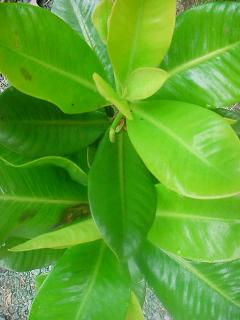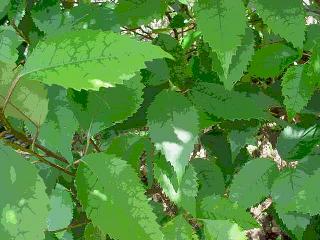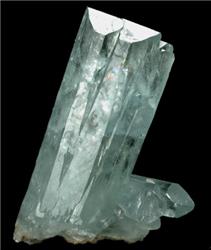For drama today, we had to answer some questions and describe them.
How do you feel today? Describe - share some vocabulary words for emotions
Today, I feel:
Happy and sad, because my friend, Christian is going to the Philippines. We are going to miss him.
Explain how you used your voice to show emotion in the puppet talk.
We had used a happy song.
For my puppet talk, I didn't talk because we were doing it with a song.
Share a video of your puppet talk.
Yet, we don't have a video of our puppet talk. I put the video as soon as possible (ASAP).
Make a positive comment on someone else’s blog
This was a place I shared my learning up to December 2021.From 2022 onwards I used a different blog platform.
Friday, May 31, 2019
Monday, May 27, 2019
Plants | Home Chemistry
For science today, we are looking at plants. First of all, we started looking and finding out about dangerous plants in the world. We had looked at a video about carnivorous plants. (the link is below) We found out that plants eat insects because they need protein when they don't have sunlight.
Plant type: Deciduous / Evergreen
Plant type: Deciduous / Evergreen
Plant type: Deciduous / Evergreen
You will need to do the following:
Habitat: (select one from the list)
AIM: TO LEARN ABOUT THE NATURE OF PLANTS
Plants fall into two categories:
1. Evergreen
2. Deciduous
| Deciduous |
| Evergreen |
Find three examples of each:
Evergreen:
1. Pine Tree
2. Eucalyptus Tree
3. Kauri
Deciduous;
1. Oak Tree
2. Maple Tree
3. Elm Tree
LEAVES
Simple Compound |
Choose a leaf and do a leaf rubbing.
Example:
Plant type: Deciduous / Evergreen
Example:
Plant type: Deciduous / Evergreen
Leaf type: Simple / Compound
Leaf colour: Green
Photo of leaf:
Leaf colour: Green
Photo of leaf:
1.
Plant type: Deciduous / Evergreen
Leaf type: Simple / Compound
Photo of leaf:
Plant type: Deciduous / Evergreen
Leaf type: Simple / Compound
Photo of leaf:
3.
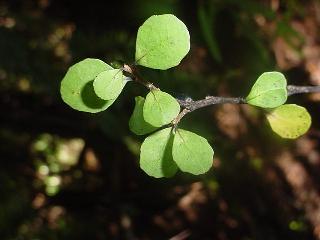 |
| Pseudopanax anomalum Credit: https://www.bushmansfriend.co.nz/ |
Leaf type: Simple / Compound
Photo of leaf:
4.
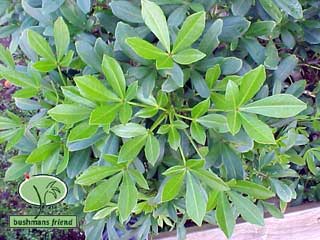 |
| Pseudopanax anomalum Credit: https://www.bushmansfriend.co.nz/ |
Leaf type: Simple / Compound
Photo of leaf:
5.
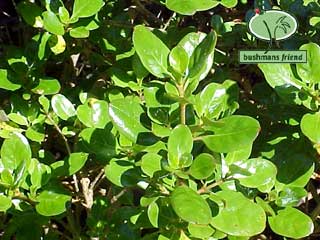 |
| Coprosma repens Taupata Credit: https://www.bushmansfriend.co.nz/ |
Leaf type: Simple / Compound
Photo of leaf:
RESEARCH 4 TYPES OF PLANT GROUPS
- Carnivorous plants
- Pine trees
- Fruit trees
- NZ Natives
You will need to do the following:
- Title: NZ Natives
- Examples:
- Kauri - Agathis australis, commonly known by its Māori name kauri, is a coniferous tree of Araucariaceae in the genus Agathis, found north of 38°S in the northern districts of New Zealand's North Island.
- Rimu - Dacrydium cupressinum, commonly known as rimu, is a large evergreen coniferous tree endemic to the forests of New Zealand. It is a member of the southern conifer group, the podocarps. The former name "red pine" has fallen out of common use.
- New Zealand Cabbage Tree - Cordyline australis, commonly known as the cabbage tree, cabbage-palm is a widely branched monocot tree endemic to New Zealand. It grows up to 20 metres tall with a stout trunk and sword-like leaves, which are clustered at the tips of the branches and can be up to 1 metre long.
- New Zealand Christmas Tree - Metrosideros excelsa, with common names pōhutukawa, New Zealand pohutukawa, New Zealand Christmas tree, New Zealand Christmas bush, and iron tree, is a coastal evergreen tree in the myrtle family, Myrtaceae, that produces a brilliant display of red flowers made up of a mass of stamens.
Habitat: (select one from the list)
- Desert / beach / mountains / swamp / plains / forest
Climate (select one from the list)
- Hot / warm / cold
- Rainy / dry /
- Windy / still
Friday, May 24, 2019
Mental Health | Drama
What is Mental Health?
Mental health relates to emotional wellbeing - it is all about how we think, feel, and behave.
When I am ______, what do I do?
Mental health relates to emotional wellbeing - it is all about how we think, feel, and behave.
When I am ______, what do I do?
- Angry - I sit somewhere alone, where no one is around
- Happy - I talk to people, enjoying myself
- Stressed - I sit somewhere, think of something else, talk to someone
How do I deal with my emotions?
I sometimes talk to someone who is trustworthy.
I sometimes talk to someone who is trustworthy.
Who is the best person to talk when:
- I am at Home? Why?
- I am at School? Why?
When I am at Home, I would talk to my parents, because one of them is at home.
When I am at School, I would talk to my friends or one of the teachers, because my friends are honest and wouldn't tell anybody, also, they can help me too.
Thursday, May 23, 2019
Crystals!! | Home Chemistry
For science today, we had to make crystals. First, we had brainstormed of 'what are the kitchen equipment' that we can make crystals out of. Here's what we've discussed:
Aim: To learn about a saturated solution and how to make crystals
Definition of crystals:
A liquid mixture, when something is dissolved into a liquid. (eg: sugar in water)
Definition of saturated:
Having or holding as much as can be absorbed or something. (when no more sugar or borax can be dissolved into the water)
Materials:

Ratio; 3 Tablespoons Borax per 1/2 cup water
Ratio: 1 cup sugar to 1/2 cup water

Ratio: 4 Tablespoons salt to 1/2 cup water
- Sugar
- Salt
- Borax
- Jelly
- Brown Sugar
- Roro
Aim: To learn about a saturated solution and how to make crystals
Definition of crystals:
A liquid mixture, when something is dissolved into a liquid. (eg: sugar in water)
Definition of saturated:
Having or holding as much as can be absorbed or something. (when no more sugar or borax can be dissolved into the water)
Materials:
- Pipe cleaner
- String
- Pegs
- Styrofoam Cups
- Borax
- Sugar
- Salt
Borax Crystals
Borax Crystals
Borax Crystals time-lapse video
Borax Crystals time-lapse video

Ratio; 3 Tablespoons Borax per 1/2 cup water
Materials
1) Borax
2) 1 Styrofoam cup
3) 3 Pipe Cleaners
4) 1 String Stick
5) 1 peg
Process
Step 1: Get a cup and put three tablespoons of borax. Label your cup. (if more than one person is doing the experiment)
Step 2: Pour 1/2 cup of warm water.
Step 3: Mix the borax for 15 minutes.
Step 4: After you've mixed your borax for fifteen-minutes, make a star out of three pipe cleaners.
Step 5: Get a peg and clip on the longest piece of the pipe cleaner.
Step 6: Put the peg sideways in the middle of the cup, so half of the star is in the borax and half is out of the borax.
Step 7: Put the cup somewhere to sit to grow.
Step 8: After a week, your crystal would've have grown.
Sugar Crystals
Materials
1) Sugar
2) 1 stirring stick
3) 1 styrofoam cup
4) 1 string
5) 1 spoon
Process
Step 1: Get a cup and put 1 cup of sugar. Label your cup. (if more than one person is doing the experiment)
Step 2: Pour 1/2 cup of warm water.
Step 3: Mix the sugar for 15 minutes.
Step 4: After you've stirred the sugar for 15 minutes. Get your stirring stick and tie it with the string.
Step 5: Put your cup somewhere to sit to grow.
Step 8: After a week, your crystal would've have grown.
Salt Crystals
Salt crystals time-lapse video
Salt crystals time-lapse video

Ratio: 4 Tablespoons salt to 1/2 cup water
Materials
1) Salt
2) 1 stirring stick
3) 1 styrofoam cup
4) 1 string
5) 1 spoon
Process
Step 1: Get a cup and put 4 tablespoons of salt. Label your cup. (if more than one person is doing the experiment)
Step 2: Pour 1/2 cup of warm water.
Step 3: Mix the salt for 15 minutes.
Step 4: After you've stirred the salt for 15 minutes.
Step 5: Get your stirring stick and tie it with the string.
Step 6: Put your cup somewhere to sit to grow.
Step 8: After a week, your crystal would've have grown.
Findings
Describe your crystals in the table below.
Crystal Type
|
Shape
(Describe the shape) |
Size
(of individual crystals) |
Hardness
(Crumbly to Rock Hard) |
Borax
| Cube | Small | Medium to Hard |
Sugar
| Cube | Small | |
Salt
| Cube | Small |
What crystals worked out best and why?:
Conclusion:
________________________________________________________________________
Conclusion:
________________________________________________________________________
After watching the videos as a class, explain how the following crystals are formed:
Type
|
Explanation
|
Salt
|
Salt is formed by salt water (ocean water) coming to the land which makes ponds from salt water. After the water evaporates and salt is left in the pond. People who work there collects the salt with a shovel and digs up the salt.
|
Sugar
|
Sugar is made from sugarcane. Sugarcanes are cut down and put them in machines. They take all of the sugar out from the sugar. That's how raw sugar is made. After the put the raw sugar and make them into white sugar.
|
Snowflakes
|
Snowflakes forms when an extremely cold water droplets freeze to pollen or a dust particle in the sky. This is when ice crystals are created. As the ice falls to the ground, water vapour freezes to the primary crystal, which makes new crystals - the six arms of the snowflake.
|
CRYSTAL TYPES
AIM: TO LOOK AT THE 7 DIFFERENT TYPES OF CRYSTALS
| Salt Crystals |
| Sugar Crystals |
| Borax Crystals |
7 different crystal shapes
Subscribe to:
Posts (Atom)

